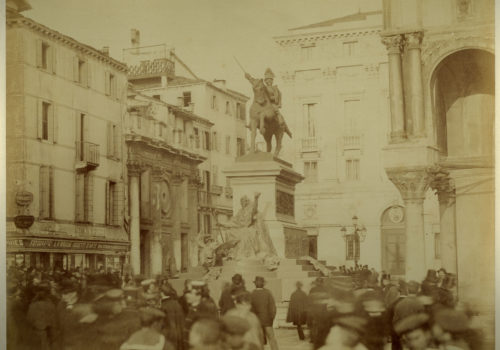A fascinating and never before seen exhibition: this city, without any doubt the most photographed in the world, already had its admirers in “panes”, since the end of the 19th and the beginning of the 20th century. Either anonymous or “artists”, they would continue the work of painters and add their new vision on the Serenissima (“most serene”). Just as reporters of that time, they show the everyday life, the street, the markets, the activity on the channels, the common people.
And all of this is being witnessed at a very essential moment of the history of the city: the end of the Austro-Hungarian empire and the struggle for the incorporation of Venice to the Italian unification. In the context of the exhibition, extracts from the film Senso by Luchino Visconti will be projected: the famous scene at the Fenice theater, where the young patriots interrupt the show in front of the dignitaries astounded by their audacity.
In addition to the charm of these images sometimes colorized where the dazzling beauty of the city explodes, there is an important experimental work on technology. We learn that the first photos taken in Venice date from the mid 19th century. Industrialists would also finance the work on Crete by the Venetian Giuseppe Gerola (1899-1900). An interest from the Instituto Veneto is found regarding photography and its techniques from 1861 with the description of the alethoscope from a certain Carlo Ponti, of whom we can also see images in the Musée Carnavalet.
But this wonderful photo exhibition also shows images from films. It is not without emotion that we discover that the Lumière brothers were in Venice in 1910 to set up their camera and shoot what we will call “the gondola ballet in the Venice channels”.
Paul Alessandrini
L’acqua e la luce
La fotografia a Venezia all’alba dell’Unità d’Italia
Until May 15th
Istituto Veneto di Scienze, Lettere ed Arti
S. Marco 2945
30124 VENEZIA (Italia)
















